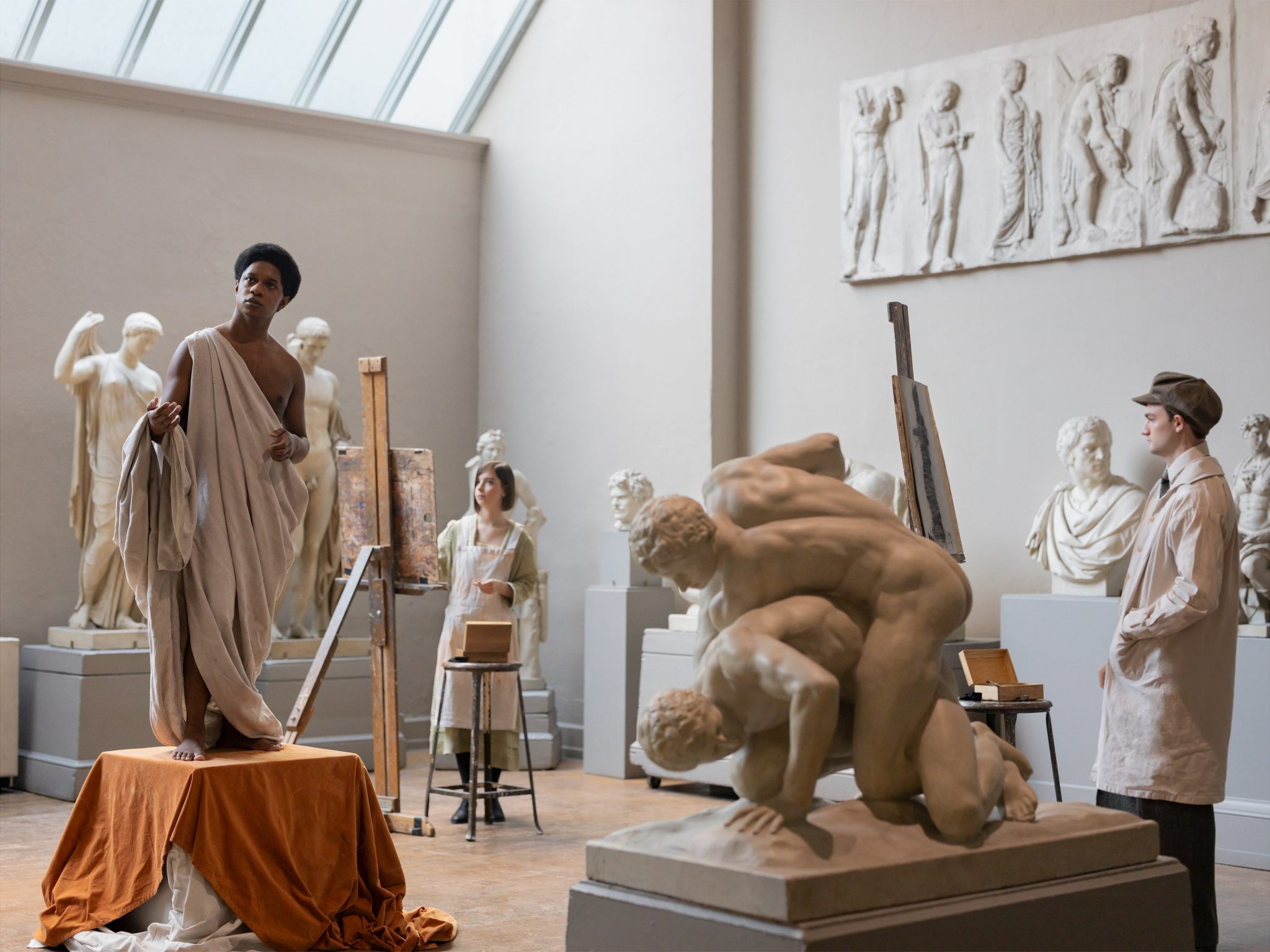How Julien’s transgressive reworkings of history and time itself have expanded our potential to deal with the complexities of the present and paved the way for generations of artists to come
In 1982 twenty-year-old film student Isaac Julien was walking through the East End of London when he encountered a crowd of men, women and children protesting the death of a young Black man named Colin Roach. Roach had died while in police custody: an alleged suicide. Although Julien didn’t know Roach, he was just a year older than the dead man and the two lived only a few blocks apart. The death sparked mass demonstrations across London as the Black community took to the streets to protest the police.
Julien would later describe the death as a lightbulb moment for him, occurring during a pivotal time in the transformation of race relations, as London reckoned with its own broken system. In his debut film the following year, Who Killed Colin Roach? (1983), he explored how the camera could be used as ‘a street weapon’; a creative approach that he learned during art workshops in secondary school and through books like the academic Teshome Gabriel’s Third Cinema in a Third World (1982) in which the camera is used to oppose whitewashed depictions of reality or history, and to indict oppressive systems by offering others forms of visualisation. The film combined elements of documentary, including footage of the demonstrations, with elements of performance and music videos.
This framework of using art as a means of recontextualising history and dissolving the boundaries between genres underpins all of Julien’s work to date, and is evident throughout the current survey of his work at London’s Tate Britain, What Freedom Is To Me. Julien uses and then redefines the visual medium as a tool against cultural erasure and capitalism. He makes a demand for boundless, often queer Black histories as a means of conjuring a liberating dream space in the face of reality. Speaking to me earlier this year, Julien described his work as an attempt to resonate across time: “The imaginary is a space for thinking about future possibilities and political autonomy”. Julien dares to offer himself and other queer Black artists, like me, permission to see how art can become a vital transgression against a complex world.
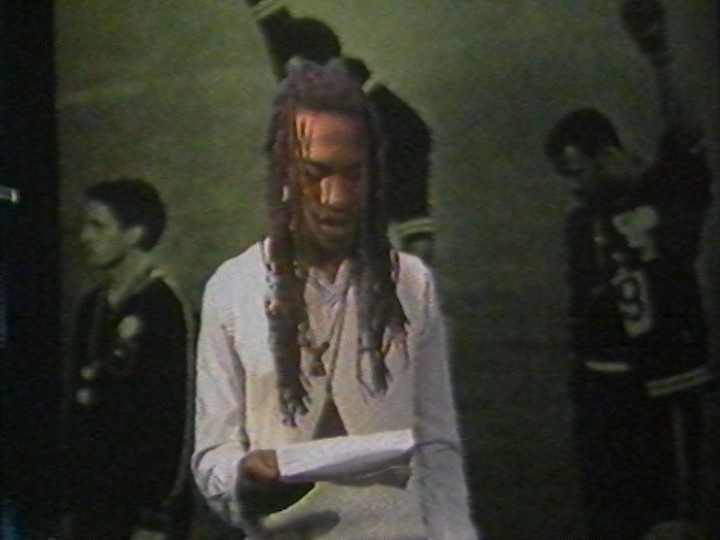
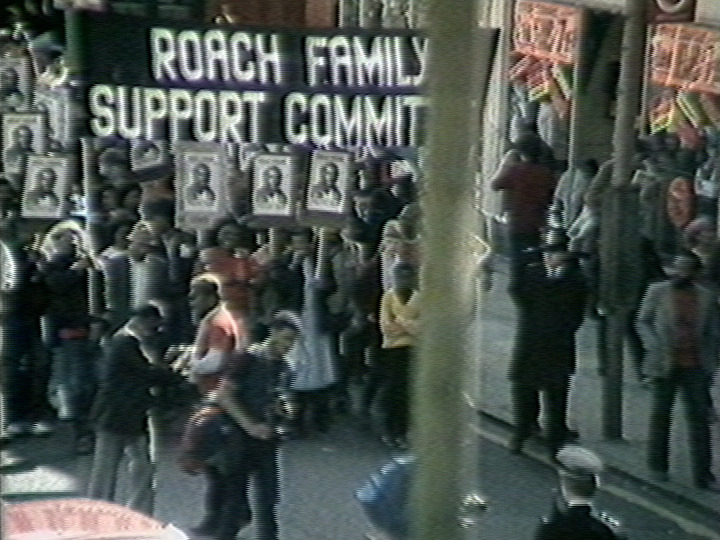
Julien would become a founding member of Sankofa Film and Video Collective in 1983. Here he learned the importance of creative communities within the developing milieu of cinema that sprang up in London during the 1980s. Here, “diasporic conversations” could be had, Julien said during our discussion. He nods to Teshome Gabriel and filmmaker Haile Gerima, both from Ethiopia, citing the “strong beginning of the queer cinema movement in Britain” and seminal queer Black artists like Essex Hemphill as important influences on him during this period.
The Tate exhibition includes his most recent film, Once Again… (Statues Never Die) (2022), a visual and poetic five-screen installation that centres around a staged conversation between two twentieth-century figures: Black philosopher Alain Locke and collector of African art Albert C. Barnes, who reflect on the place and meaning of African and Black art, interspersed with narrated excerpts of writings from bell hooks, Aimé Césaire and Alice Smith. The film was commissioned by the Barnes Foundation, and much of their conversation in the film was inspired by Julien’s research in the foundation’s archive, in Philadelphia. At one point, framing a Black woman on the centre screen as she observes examples of African art in a museum with a forlorn expression, Julien places his audience in the perspective of the sceptical museum-goer, forcing us to confront the colonial fetishisation of Black art. The art fills the surrounding four screens in magnified clarity as the narrator asserts, “Better if they [the Europeans] let those civilisations develop and flourish rather than offering up scattered limbs”.
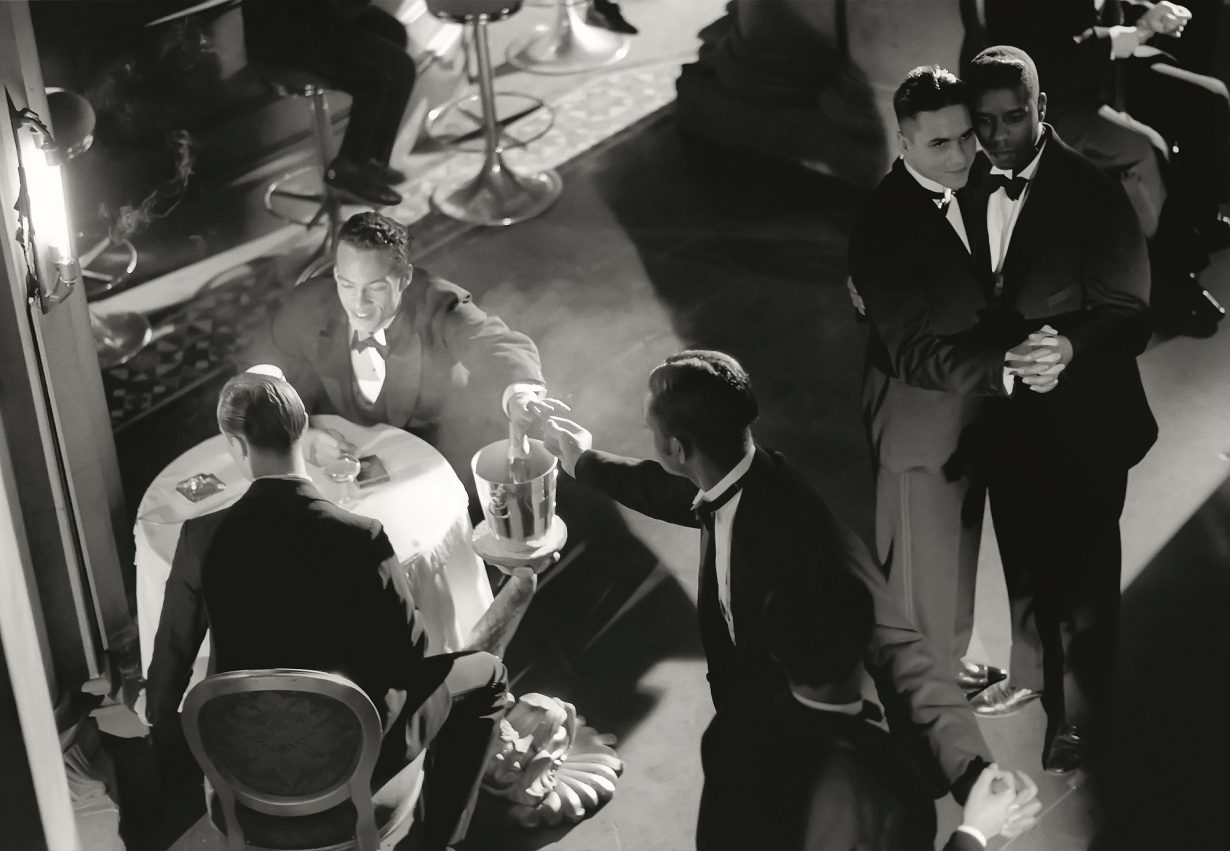
Black and African diasporic art fills the five screens in stunning detail. With the image of scattered limbs in mind, I see Once Again… (Statues Never Die) and Julien’s wider body of work as attempts to find clarity through almost-microscopic examinations, using multiple screens to illustrate how Black and African art is disembodied by the museum’s colonial violence.
There is, though, some sense of hope offered. The film opens with shots of a snow-covered museum; in the ending scenes, Locke sits outside as the snow around him floats back up to the sky. In Julien’s work time, always connected to the past and moving in unlikely ways, is not linear. This dedication to a personal, creative and collective past has inspired artists, including myself, to grapple more with how the past is so vividly connected to the present. In many ways Julien’s dismantling of time itself is a weapon against colonial structures. In his best-known film, Looking for Langston (1989), the viewer is taken through a surrealist depiction of American poet Langston Hughes on a night out in a queer speakeasy, all shot in black-and-white.
“There’s a funny way that when you make work, it haunts the present,” Julien told me. “I would say in a work like Looking for Langston I was looking for a way of transgressing time. It wasn’t about a historical period, but more the point of what is seen as historical and contemporaneous. I wanted to time travel.”
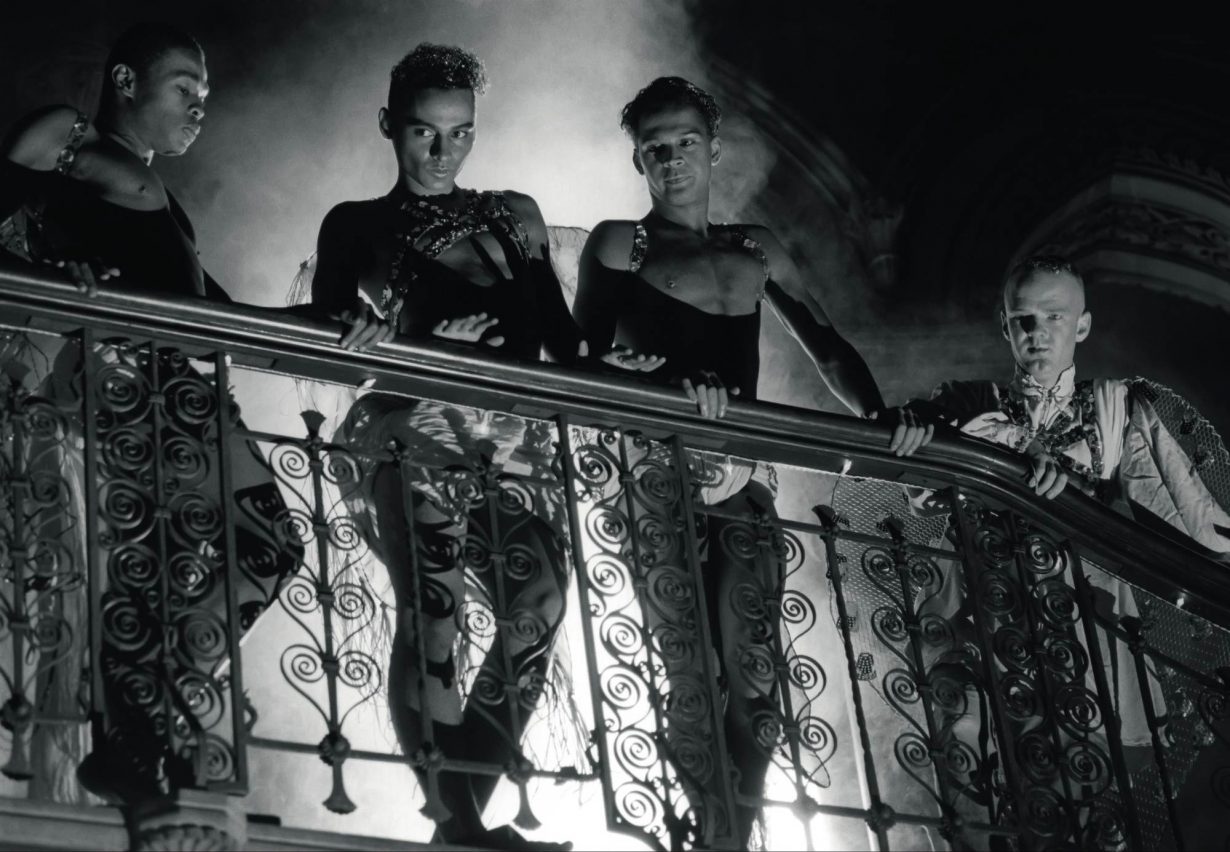
In 2016 I was hungry to wrangle with life and prove my ideals as a radical after spending my senior year of college organising during the beginnings of the Black Lives Matter movement. Like Colin Roach for Isaac Julien, the 2014 police murders of Michael Brown and Tamir Rice were the radicalising catalyst for me in my life and on the page as a burgeoning writer. A queer Black child of Jamaican immigrants to the US, I later travelled to the Philippines, where I had my first taste of the global reach of anti-Blackness. In this delirium of dredging through a world that could so easily destroy me, I felt lost, less beautiful and ensnared by state violence and my double consciousness. If I were shot by police, like those Black faces strewn across the news, I would surely be lost to a meaningless oblivion, forever stained by that last violence. Is this all that Black people will be to this world? I asked myself again and again.
A few months later I watched Julien’s Looking for Langston for the first time. Queer Black desire is so brazenly explored in the main character’s dream spaces, merging photography and film to shift from dance scenes to memories of queer lovers in bed. In the film’s opening scene, funeral attendees stare at Langston Hughes’s body in a casket, and then the film shifts to images of Hughes’s work. It inspired me to watch the dreamy depictions of Hughes enthralled by his lover and realise that I could display the same once-taboo desire in my own work. I marvelled at smiling queer Black men twirling through banquet halls, a vision of a past and reality I hungered for. This dream space of creative possibility was a launchpad for imagining another possible future. The film offered a tool that helped me revisit my own past – to help me understand how visualising the past, even if it is a dream space, can help us survive the terrors of the present through examinations of real and imagined histories. I understood that we must reckon with the dead, in order for our grief to not control us.
For many queer Black artists, we see life and violence through a multiplicity of intersections. Death becomes the threshold we must cross to create an authentic, alternative world within our reality. In Looking for Langston, Julien asserts that the celebration and memorialising of queer love should have been centre-stage during the aids crisis, a riposte to repression and murder of the soul.
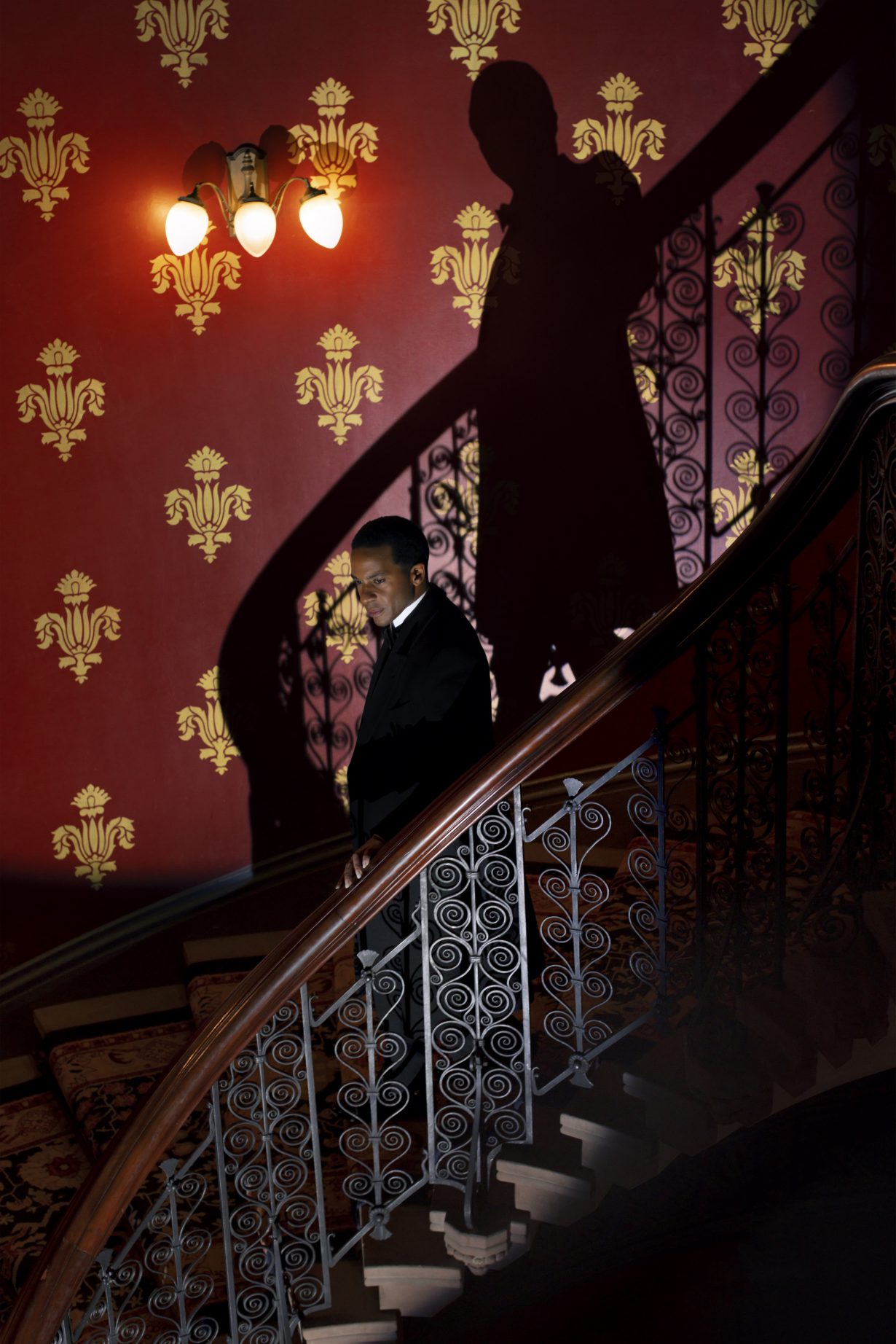
A parallel collapsing of time takes place in Lessons of the Hour (2019), a ten-screen video installation exploring the life of nineteenth-century writer and abolitionist Frederick Douglass. The images recreate moments in his life, such as a view of cotton fields in which he is forced to work, or later speaking to audiences about abolition, with narration that draws on his writing. Sounds like the sharp cracking of whips draw the viewer back into his time. Among the many screens, we are placed within Douglass’s imagined interiority as he navigates escaping slavery and advocating for its end. Julien noted when we spoke of completing the film in the two years before the George Floyd protests of 2020; the subsequent events, he said, deepened his conviction to make use of the camera as a weapon against anti-Black forces that continue to haunt the present.
Throughout his body of work, Julien has worked diligently to break the boundaries of memory, genre and linear representation of queer desire. In his first feature film, Young Soul Rebels (1991), Julien makes use of both the documentary and thriller genres to give a portrait of London’s vibrant scene at a time when queer Black narratives were considered far more taboo. Childhood best friends and funk-music pirate-radio DJs Chris and Caz grapple with the murder of their gay friend TJ. The London summer is depicted with somewhat muted tones and in stark contrast to the dramatic style of partygoers in leather, chains, mesh tank-tops and dyed hair. The exuberant nightlife is offset by the main characters grappling with their changing friendship, as Caz explores his queerness through a fling with a white punk and Chris is unjustly accused of TJ’s murder by police. Moments after finding out about their friend’s death, Caz says to Chris, “I know it ain’t right, but I just keep thinking, it could’ve been me, you know?”
I related so much to Chaz, as a queer Black man who loved the DIY/punk music scene around me as I came of age, but still had to navigate both anti-Blackness from white peers and homophobia from Black peers. Young Soul Rebels ends on a note of hope, where Caz and Chris reconcile the underlying tension of their friendship once they solve their friend’s murder. The film asserts that art and community can help us survive hard times, with a loving friendship between a straight and queer man. Both Looking for Langston and Young Soul Rebels were pivotal additions to the beginnings of the New Queer Cinema Movement of the early 1990s, alongside the work of filmmakers like Todd Haynes and Derek Jarman.

From 2017 to 2021 I embarked on writing a memoir, inspired by the dogged approach of artists like Julien to confront my personal and collective past. I traced the history of slavery and migration that led to my own experience as a Black and Caribbean American body in another land than where my parents had been born. I sought to make sense of mainstream masculinity and grappled for liberated queer desire. By the end of my book, I depart from journalistic and cultural interpretations to reach a deeper dream space; an imagined reality where my father has not died, but one that still reckons with the complexities of my queerness and the deaths of others around me. History, love, pain and imagination merge, my own iteration of Julien’s mission. I saw firsthand what Isaac Julien’s work offers to artists and writers who have come after him, including British painter and writer Lynette Yiadom-Boakye. Jamaican-American filmmaker Rodney Evans once noted he wished to continue the legacy of filmmakers like Julien. Julien opens the door for them to cross that threshold and queer the archive, to free themselves from white supremacist frameworks and to create a dream space of rest and reckoning. With his survey exhibition now offering new audiences a route into his remarkable, expansive body of work, Julien does away once more with the boundaries between past and present. For Julien, freedom is found through the realisation that we each live right alongside history. How we choose to define it for ourselves is the way in which we can revolutionise the present.
Isaac Julien: What Freedom Is To Me is on view at Tate Britain, London, through 20 August
Isaac Julien, Once Again… (Statues Never Die) – Photographs, can be seen at Victoria Miro, London, through 4 June
Once Again… (Statues Never Die) (2022) is also on show as part of the Sharjah Biennial 15, through 11 June
